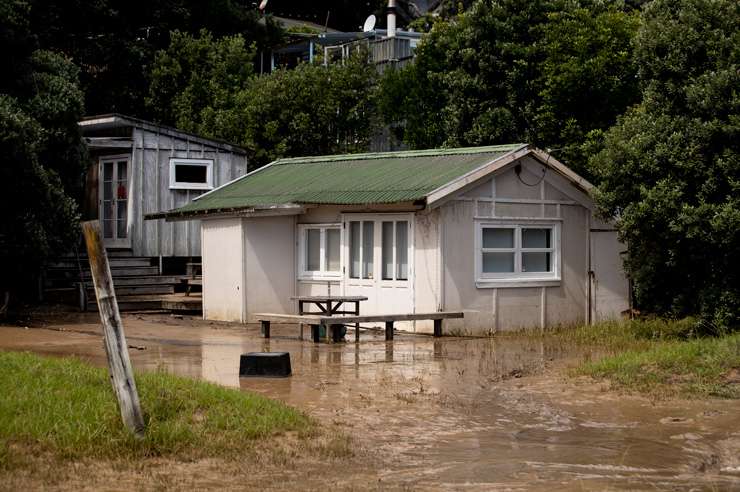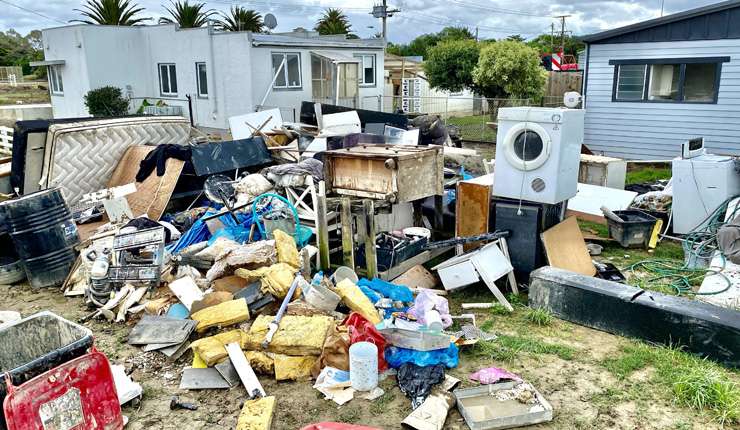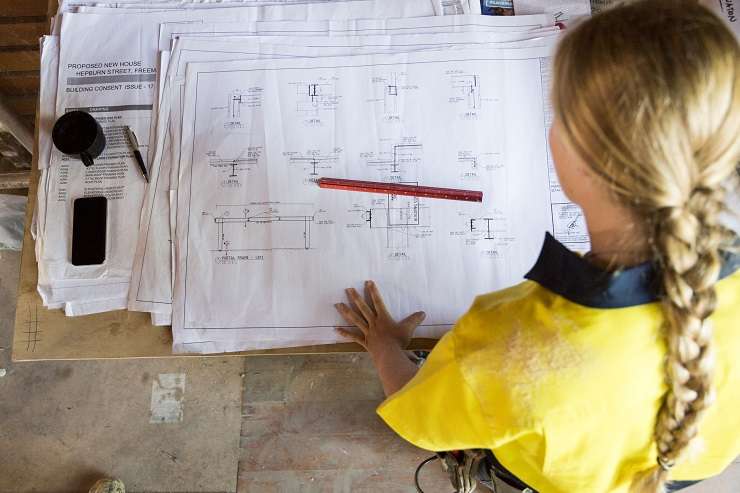Kiwis hoping for advice on how to make their homes more resilient to the next round of floods and storm damage will have a long wait ahead of them for changes to building codes.
Unlike in Australia, where Brisbane, Melbourne and New South Wales councils and water bodies have brought on architects and experts to help them create extensive guides for homeowners, New Zealand homeowners impacted by the recent extreme weather are on their own.
A spokesperson for Auckland Council said their building consents team can only assess proposed rebuilds for compliancy with statutes, which come under MBIE and BRANZ umbrellas. At this stage, it is one of the many building organisations that does not have flood-resilient home programmes like those offered in Brisbane or Melbourne after their devastating floods.
BRANZ, the building industry’s research and testing arm, whose work feeds into the Building Code and standards, said it does not have anyone dedicated to looking at flood remediation or rebuilding houses in new ways that help reduce the damage or speed up clean up next time.
Start your property search
For now, they provide a helpful explainer on how council stickering systems work and how to clean up, but any rebuild advice is based on adhering to current building codes rather than looking at new materials or building systems.
Read more:
- Mega-millions at risk: Will buyers abandon cliff-top homes?
- NZ's new rental crisis: Scramble to find a home after floods and cyclone damage
- Flood damage: what are your legal rights
The Ministry of Business, Innovation and Employment, which oversees building and construction legislation, is currently considering whether additional information and guidance is needed to help people building new or repairing post-flood, said Suzannah Toulmin, Building for Climate Change manager.
Today, their current guidelines tell owners to consult their local council, an engineer, architect or eco-design advisor on what to do to minimise future damage, but have a helpful guide on what can be done in the way of repairs without needing a building consent.
And while MBIE recommends using materials that are water-resistant, or that are easier to remove or replace after a flood, they do not offer specifics on what those might be, instead referring OneRoof to extensive regulations around use of gib board under the current building code.
Longer term, Toulmin said, MBIE’s Building for Climate Change (BfCC) programme which is looking at how buildings are prepared for the effects of climate change, will include advice on how people can adapt their homes and improve resilience. But the first round of actions from that plan are not slated until 2026.

A home North Piha, in Auckland's west, under water. Some homes damaged by Cyclone Gabrielle have been left uninhabitable. Photo / Dean Purcell

Water-damaged belongings are piled up on Phillips Street, in Awatoto, Napier. Photo / Warren Buckland
Spokespeople from the National Science Challenge's Resilience to Nature’s Challenges study, a research programme looking long term at how and where we build for natural disasters, told OneRoof they were not aware of the type of advice provided by flood-prone Australian authorities being prepared here.
And while the Insurance Council is keen to lift their heads to look at helping with better design to reduce damage next time, for the moment all their resources are focused on the urgent needs of their customers’ cleaning and repairing claims.
An Insurance Council spokesperson said that there is always tension between the urgent and the important.
“Right now, there is an urgent need to get work completed on many homes. This inevitably means working with what we’ve got in terms of working with different trades using readily available building systems and materials that are to hand, readily compliant and, where necessary, consentable," the spokesperson said.
“However, events such as this always bring up the important issue of what we could do to build resilience into our homes and businesses should the worst happen again. That’s a longer-term discussion for insurers, consenting authorities, building professional and materials suppliers to have in advance of the next big event.”

Homeowners can do a lot of rebuilding without consents and permits, but the bigger discussion on better retro-fitting for future events is yet to start in New Zealand. Photo / Getty Images
The shortcut of picking up solutions from Australia or further afield may not work here, said BRANZ senior materials scientist Kathryn Stokes.
Complexities of the New Zealand market mean products or construction methods allowed overseas won’t work here.
“A lot of people don’t realise that the New Zealand building code has different required life times for certain materials: 50 years for structural components, but 15 for things like cladding or windows, and five years for things that are easy to replace. Things like plasterboard have a structural component,” she said.
Stokes said New Zealand’s code requiring cavities in walls for air flow means Australian recommendations for replacing gib double skin interior walls with materials like fibre cement, single skin hardwoods or core-filled block that are easy to hose down and dry won’t work here.
“Then we have seismic and high wind factors; there’s moisture that comes from inside buildings too. We need that ventilation.
“There is never a single easy answer because of how buildings work, how much things are interconnected,” she said, adding that using cement or concrete products also goes against the push for low-embedded carbon products.
The not-so-good news is that consent to use less common materials (known in building code parlance as “alternative solutions”) is up to individual councils, and require proof that the new materials can work.
“Companies [who introduce new materials] would need to provide proof that their product performs to meet the code, and different councils have different approvals. Some are more risk averse,” she noted.
Brisbane architecture practice JDA Co are experts in retrofitting homes to handle flood events, and have developed flood resilience guides for Melbourne and Queensland authorities.
The good news is that some of their suggested wet-proofing solutions are entirely doable in New Zealand. The goal is to let water quickly flow out of the house before it causes damage with designs that eliminate cavities or nooks where water and silt can seep into house structure, and raising storage and electrical circuits so they won’t be damaged by high water.
How to rebuild better
- Use materials that are water-resistant, or that are easier to remove or replace after a flood. Consider polished concrete slab floors, water-resistant wall linings (this is tricky territory to still meet New Zealand building code) and water-resistant cabinet materials.
- Move electrical sockets, meter boards and external appliances like heat pump condensers high on walls to above flood levels
- Design cabinetry and appliances to be elevated to allow for damaged components to be easily replaced
- Raise floor levels, or locate the building on a higher ground on the site
- Landscape to help absorb and retain water, such as adding rain gardens or rainwater tanks , and using permeable materials on driveways and hard landscaping.
Source: MBIE

















































































